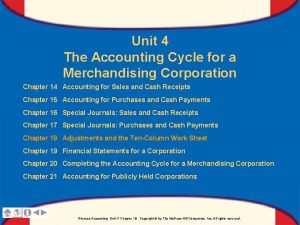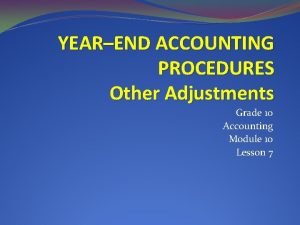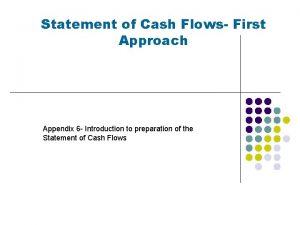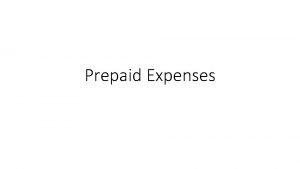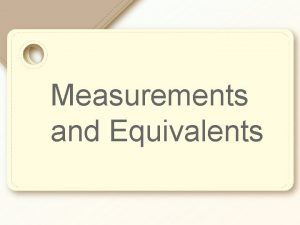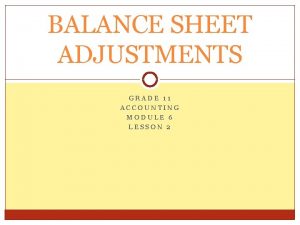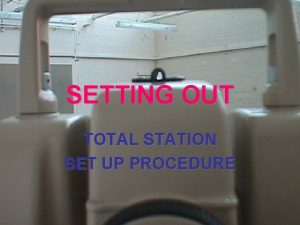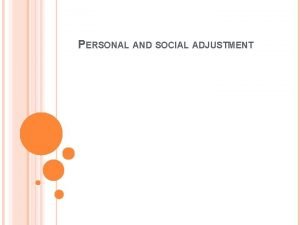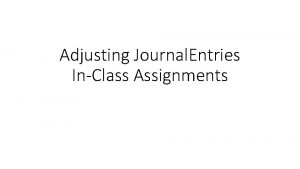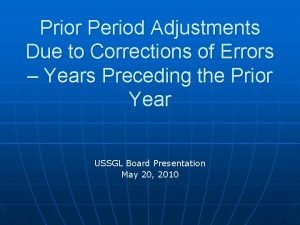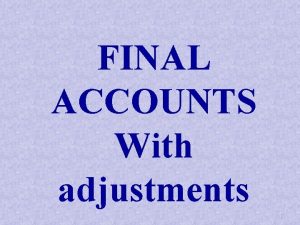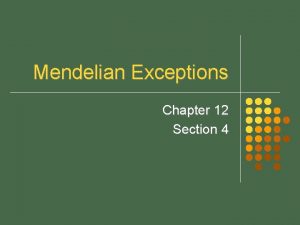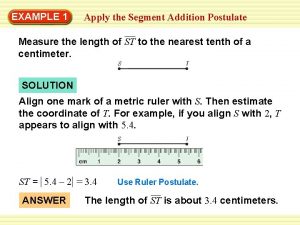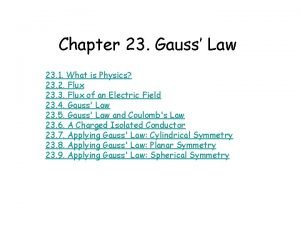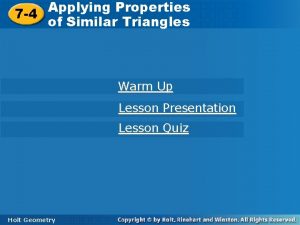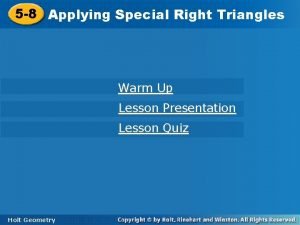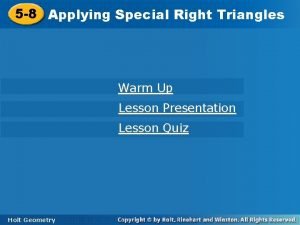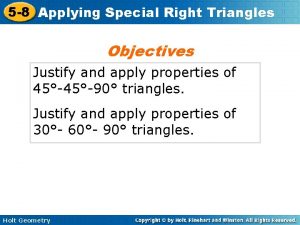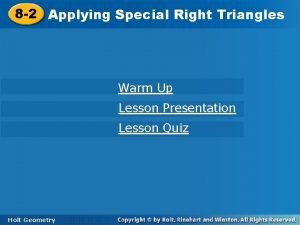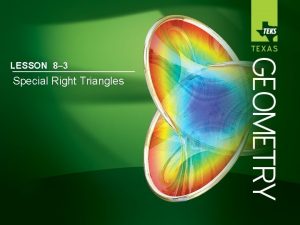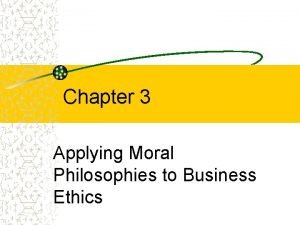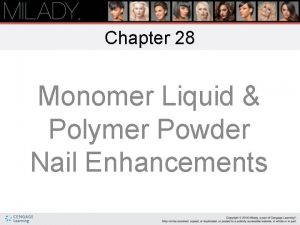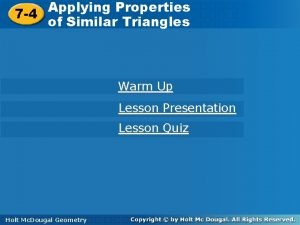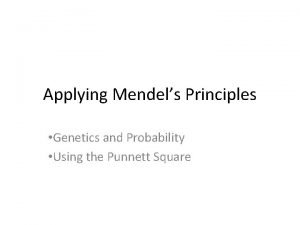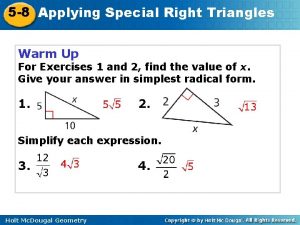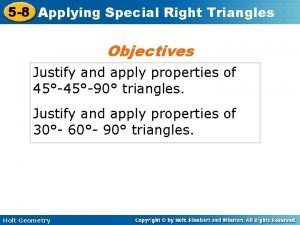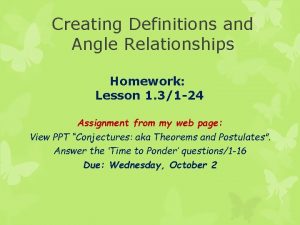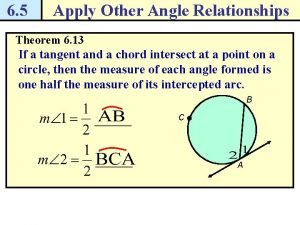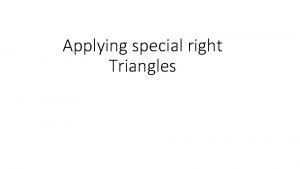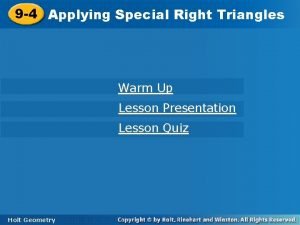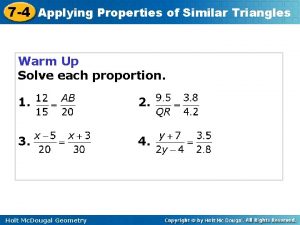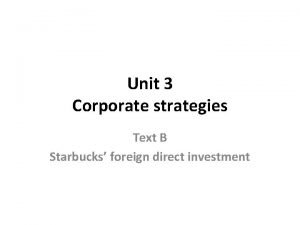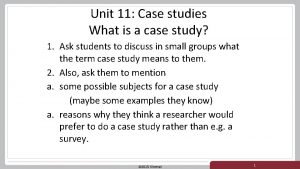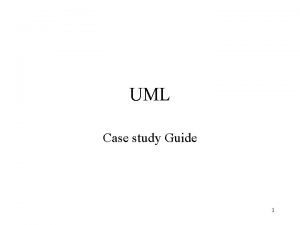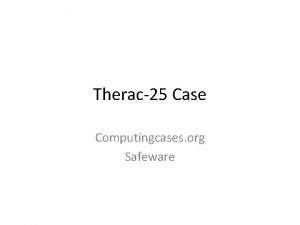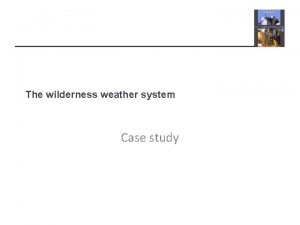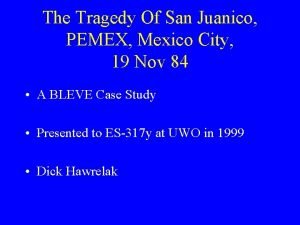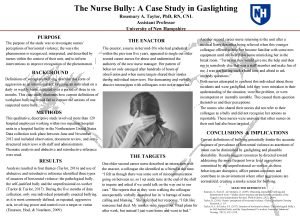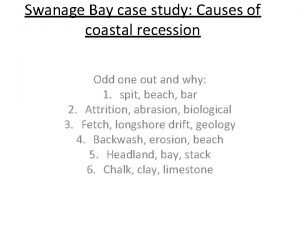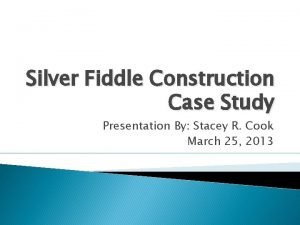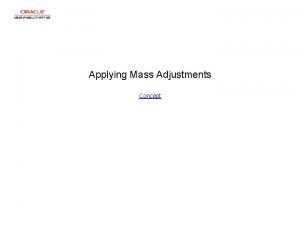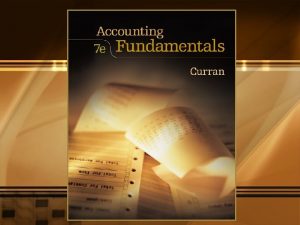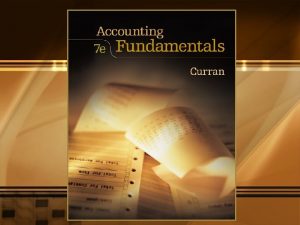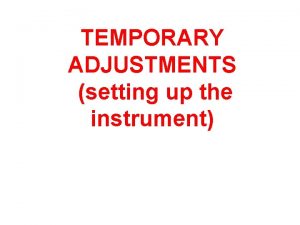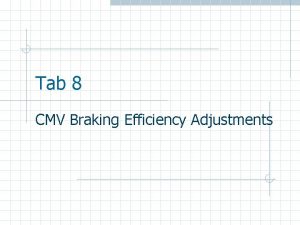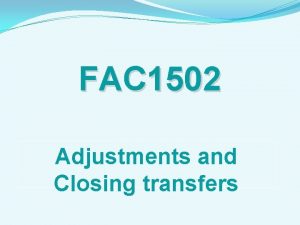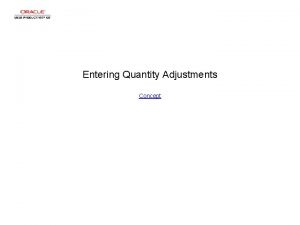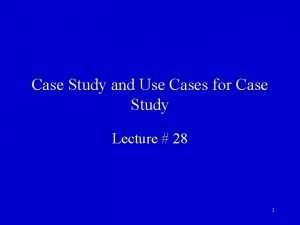Chapter 5 Case Study Applying Adjustments Chapter 5














































































































- Slides: 110

Chapter 5 Case Study - Applying Adjustments

Chapter 5: Learning Objectives • After completing this chapter, you will be able to: – – Complete two mock appraisals. Select comparables. Make adjustments. Write comments which explain and defend the adjustment. – Write an appraisal report which is both credible and defensible. – Defend adjustments.

Chapter Introduction • Working appraisers want to know how to apply what they have learned to everyday appraisal assignments. • In the past chapters, we’ve learned some distinctive ways to develop adjustments for green features, and more important, how to defend these adjustments.

Case Study #1 • Subject House – Your assignment is to appraise a two-year old Green house. Let’s look at the details.

Subject House • This house has a HERS rating of 60, and is an ENERGY STAR home. • It is located in a residential subdivision where the homes range in age from 0 -10 years old. • The subject is a Cape Cod style home, like most homes in this subdivision

Subject House • The room count is seven (7) rooms, three (3) bedrooms, and two (2) full and one half (. 5) baths. • The house has 2, 200 finished square feet above grade. • There is a screened porch, attached twocar garage, and a full unfinished basement. There is no attic, but there is generous eave storage.

Subject House • The house has vinyl siding and fiberglass roof shingles. • The lot size is 100 x 100. • The property is served by public water and sewer, and all underground utilities. • The house has a high efficiency gas forced air furnace with central air conditioning and a gas fireplace.

Subject House • The house has upgraded windows and exterior doors, including triple pane windows with a U-factor of. 30. • The insulation package is an upgrade and is R-40 in the ceiling and R-24 in the walls. There is an on-demand tankless hot water heater.

Subject House • The house is being sold with the original (2 -year old) ENERGY STAR Appliances: Dishwasher, gas range, refrigerator, built-in microwave, and high efficiency washer and gas dryer. • The house has typical landscaping, although the owners note all their plantings are native plants, which require less watering. The builder anticipated the annual energy costs for this house at $100/month for both gas and electric, year round.

Subject House The builder also noted at the time that annual energy costs for a standard home with a HERS rating of 100 would be $200/month. The owners have documented their actual total gas and electric bills, for a family of four, of $80/month. They attribute this to:

Subject House – Use of the heating and cooling zones in the house (there are four zones). – Programmable thermostats. – Use of CFL or LED light bulbs exclusively. – Never using the heated dry cycle on the dishwasher. – Washing clothes almost exclusively in cold water. – Drying some clothes on racks or a clothesline. – Setting thermostat at 68° F in the winter and 78° F in the summer - as opposed to 72° year round, which is what the builder’s estimates were based on.

Choices • Now we will move on with six (6) choices to compare the subject house to.

Choice #1 • This house has a HERS rating of 70. • It is located within the same subdivision; this is also a Cape Cod style home. • The date of sale is six (6) months ago. The house was 18 months old at the time of sale.

Choice #1 • This house also has 2, 200 square feet, and the same room count, lot size, porch, garage, fireplace, and heating and air conditioning system. • It has the standard double pane low-E windows, with a U value of. 37. • The exterior doors are the same. • It has a conventional gas hot water heater, as opposed to an on-demand tankless hot water heater.

Choice #1 • The appliances are the same package as the Subject’s. • The insulation package is the builder’s standard. • The builder’s estimate of monthly gas and electric costs was $135 a month. Actual costs for operation of the utilities are not available in the MLS, nor did the listing agent have that data.

Choice #1 • This house sold for $249, 900 with a three (3) percent seller’s assist for closing costs. • Let us look at choice #2, next.

Choice #2 • This house has a HERS rating of 60. • It is located within the same subdivision and is a two-story home. • The house was new (never occupied) when sold. • The date of sale is four (4) months ago.

Choice #2 • This house has 2, 400 square feet, and the room count is eight (8) rooms, four (4) bedrooms, and two (2) full and one half (5) baths. • It has the same lot size, porch, garage, fireplace, and heating and air conditioning system as the Subject.

Choice #2 • It also has the upgraded windows, extra insulation package, and on-demand tankless hot water heater. • The appliance package is the same as the subject property. • The builder’s estimate of gas and electric costs was $110 a month.

Choice #2 • It sold for $288, 600 with no seller assist. • Let us look at choice #3, next.

Choice #3 • This house has a HERS rating of 60. • It is located within the same subdivision and is a one-story, ranch style home. • The house was just over three (3) years old when it sold three (3) months ago. • This house has 1, 900 square feet, with a room count of seven (7) rooms, three (3) bedrooms, and two (2) full and one half (. 5) baths.

Choice #3 • It has the same porch, lot size, garage, fireplace, heating and air conditioning system as the subject, as well as the upgraded windows, an extra insulation package, an on demand tankless hot water heater, and the same appliance package. • The builder estimated gas and electric costs at $85 a month. The listing agent reported that, on average, the utility bills were the same as the builder predicted.

Choice #3 • The house sold for $255, 900.

Discussion Question • Based on your knowledge, list several key differences that immediately stood out to you between the subject house and choices #1, #2, and #3

Discussion Answer • Difference in HERS ratings with choice #1. • Difference in hot water heater with choice #2. • Difference in builder’s estimate of monthly gas and electric with choices #1, #2 and #3. • Difference in style of home, square foot, and number of rooms with choices #1 and #2.

Choice from comparable neighborhoods • The choices we discussed (#1, #2, #3) are the only choices located within the same subdivision within the past twelve months. • There is a comparable neighborhood about one mile away - same school district, and equally convenient as the subject’s neighborhood to schools, shopping, and other amenities. • This subdivision has larger lots—the typical lot is around a half acre—and most of the houses there have ground source heat pumps.

Choice #4 • This is a LEED-certified Gold home. • It is located in the competing subdivision and is a Cape Cod style home. • The date of sale is two (2) months ago. The house was three (3) years old when it sold.

Choice #4 • It has 2, 300 square feet, seven (7) rooms, three (3) bedrooms, and two full and one half (2. 5) baths. • The lot size is 200 x 150. • It also features a two-car garage, screened porch, and gas fireplace.

Choice #4 • It has a ground source heat pump, the same U-rated windows, and the same R- ratings in insulation as the subject property. • It has solar panels on the roof. • The driveway is a permeable surface, and the garage is detached from the house.

Choice #4 • This house has zoned heat and the domestic hot water comes from the heat pump. • Appliances included are comparable to those at the subject property. • Energy costs for gas and electric were estimated by the builder at $100/month.

Choice #4 • The house sold for $290, 000. • Let us look at choice #5, next.

Choice #5 • This is a LEED-certified Gold house. • It is also located in the competing subdivision. • It is a new Cape Cod and has never been occupied. • It sold one (1) month ago.

Choice #5 • It has 2, 400 square feet, eight (8) rooms, four (4) bedrooms, and three full baths. • It also has a screened porch and a gas fireplace. • It features a ground source heat pump, and the same U-rated windows and Rratings in insulation as the subject. • It has photovoltaic shingles.

Choice #5 • It has a permeable driveway surface and a twocar detached garage. • The lot size is 200 x 200, but the rear portion is quite steep. Your estimate of it is confirmed by the listing agent, who tells you that approximately 25 percent of the site was too steep to be used. • Appliances included are comparable to the subject property. • Builder estimates gas and electric costs total at $105 per month.

Choice #5 It sold for $303, 900. • Let us look at choice #6, next.

Choice #6 • This is a LEED-certified Platinum home; it is also a zero net energy home. – The house achieves a net zero rating (HERS rating of 0) by utilizing a ground source heat pump, photovoltaic shingles, and solar panels on the garage and the house.

Choice #6 • The style is somewhat contemporary, twostory, and the solar panels are quite obvious from the street view. • This is a one-year old home, which sold one (1) month ago. • It has windows comparable to the subject, and even more insulation, plus concrete siding, which adds R-value.

Choice #6 • The lot is 30, 000 square feet. • There are 2, 600 square feet of living space, with eight (8) rooms, four (4) bedrooms, and two and one-half (2. 5) baths.

Choice #6 It sold for $350, 000.

Reviewing Choices • Without making any adjustments, but by simply reviewing the available choices, if you had to pick three choices to discard immediately, which three would they be and why?

Reviewing Choice Answers • Choice. #1, because it lacks the U-rated windows and upgraded insulation package. • Choice. #3, because it is a ranch. • Choice. #6, because it is zero net energy. • Most appraisers will employ the logic that buyers of Cape Cods may consider twostory homes.

Comparable Choices • You have now decided to use choice #2, #4 and #5 as your comps 1, 2 and 3, respectively [1, 2, and 3 refers to their respective positions on the sales comparison grid].

Comparable Choices • For reference: – Choice #2 has become Comp. #1 – Choice #4 has become Comp. #2 – Choice #5 has become Comp. #3

Known Adjustments • Assume the following are known adjustments: – For land, adjust at 50 cents per square foot, but based on useable land. – For full bath versus half bath, adjust $5, 000. – For a new house versus one that are one (1) to four (4) years old, adjust two percent (2%) of sales price. – For square footage differences, adjust at $40 per square foot.

Check your Knowledge 1. Based on these calculations, if you make adjustments to Choice #2 - which you are using as Comp. 1 - how many do you make? a. none b. one c. two d. three

Check your Knowledge (con’t) 1. Based on these calculations, if you make adjustments to Choice #2 - which you are using as Comp. 1 - how many do you make? a. none b. one c. two d. three

Check your Knowledge (con’t) 2. What is the total dollar amount you have adjusted for Comp. 1? a. $5, 772 b. $8, 000 c. $13, 612 d. $13, 772

Check your Knowledge (con’t) 2. What is the total dollar amount you have adjusted for Comp. 1? a. $5, 772 b. $8, 000 c. $13, 612 d. $13, 772

Check your Knowledge (con’t) 3. What is the reconciled value of Comp. 1? a. $275, 000 b. $285, 000 c. $280, 100 d. $288, 600

Check your Knowledge (con’t) 3. What is the reconciled value of Comp. 1? a. $275, 000 b. $285, 000 c. $280, 100 d. $288, 600

Check your Knowledge (con’t) 4. How many adjustments do you make to Comp. 2? a. one b. two c. three d. four

Check your Knowledge (con’t) 4. How many adjustments do you make to Comp. 2? a. one b. two c. three d. four

Check your Knowledge (con’t) 5. What is the dollar amount of the adjustments you have made to Comp 2? a. $8000 b. $10, 000 c. $12, 000 d. $14, 000

Check your Knowledge (con’t) 5. What is the dollar amount of the adjustments you have made to Comp 2? a. $8000 b. $10, 000 c. $12, 000 d. $14, 000

Check your Knowledge (con’t) 6. What is the adjusted value of Comp. 2? a. $272, 000 b. $275, 000 c. $276, 000 d. $285, 000

Check your Knowledge (con’t) 6. What is the adjusted value of Comp. 2? a. $272, 000 b. $275, 000 c. $276, 000 d. $285, 000

Check your Knowledge (con’t) 7. How many adjustments do you make to Comp. 3? a. two b. three c. four d. five

Check your Knowledge (con’t) 7. How many adjustments do you make to Comp. 3? a. two b. three c. four d. five

Check your Knowledge (con’t) 8. The adjustment for lot size you make for Comp. 3 is a. $5, 000. b. $10, 000. c. $15, 000. d. $20, 000.

Check your Knowledge (con’t) 8. The adjustment for lot size you make for Comp. 3 is a. $5, 000. b. $10, 000. c. $15, 000. d. $20, 000.

Check your Knowledge (con’t) 9. The other adjustments you make to Comp 3, in addition to the $10, 000 site adjustment total, are in the amount of a. $16, 078. b. $18, 000. c. $19, 078. d. $22, 078.

Check your Knowledge (con’t) 9. The other adjustments you make to Comp 3, in addition to the $10, 000 site adjustment total, are in the amount of a. $16, 078. b. $18, 000. c. $19, 078. d. $22, 078.

Check your Knowledge (con’t) 10. What is the reconciled value of Comp. 3? a. $265, 800 b. $274, 800 c. $275, 000 d. $290, 000

Check your Knowledge (con’t) 10. What is the reconciled value of Comp. 3? a. $265, 800 b. $274, 800 c. $275, 000 d. $290, 000

Check your Knowledge (con’t) 11. Based on the above data, what would you be inclined to value the subject property for Comp. 3? a. $250, 000 b. $265, 000 c. $275, 000 d. $272, 000

Check your Knowledge (con’t) 11. Based on the data in the last slide, what would you be inclined to value the subject property? a. $250, 000 b. $265, 000 c. $275, 000 d. $272, 000

Check your Knowledge (con’t) 12. Based on the data among the comparables and the subject, which is correct regarding HERS ratings of 60 and GOLD LEED ratings? a. The market pays a two percent (2%) premium for the GOLD LEED rating. b. The market penalizes the HERS rated home by two percent (2%). c. The market treats both the GOLD LEED rated home and the HERS 60 rated home the same. d. There is not sufficient data to determine this answer.

Check your Knowledge (con’t) 12. Based on the data among the comparables and the subject, which is correct regarding HERS ratings of 60 and GOLD LEED ratings? a. The market pays a two percent (2%) premium for the GOLD LEED rating. b. The market penalizes the HERS rated home by two percent (2%). c. The market treats both the GOLD LEED rated home and the HERS 60 rated home the same. d. There is not sufficient data to determine this answer.

Defend your Choices • After you submit your report, the underwriter sends you an email and lists choice #1, choice #3, and choice #6, which the AVM (Automated Valuation Model) has found as possible comparables for you to use, and questions why you did not use them. • Select the BEST statements to explain why you did NOT use these choices, recalling that Fannie Mae, in #7 of the certifications page you sign states: • “I have selected and used comparable sales that are locationally, physically, and functionally the most similar to the subject property. ”

Defend your Choice (con’t) 1. Choice #1 was the Cape in the same development, which had the same amount of square footage, but a higher HERS rating (70 vs. 60), fewer insulation upgrades, and a conventional hot water heater. It sold with a seller assist. The actual energy costs for the house were unknown. The best reason to NOT use this as a comparable is a. it had a seller concession, and no matter how you adjust for those, the underwriters don’t like it. b. it had a HERS rating of 70, and you had a comparable with a HERS rating of 60, which was the same as the subject. c. the house was 18 months old at the time of sale. d. you could not verify the actual energy costs for the house.

Defend your Choice (con’t) • Choice #1 was the Cape in the same development, which had the same amount of square footage, but a higher HERS rating (70 vs. 60), fewer insulation upgrades, and a conventional hot water heater. It sold with a seller assist. The actual energy costs for the house were unknown. The best reason to NOT use this as a comparable is – – it had a seller concession, and no matter how you adjust for those, the underwriters don’t like it. it had a HERS rating of 70, and you had a comparable with a HERS rating of 60, which was the same as the subject. the house was 18 months old at the time of sale. you could not verify the actual energy costs for the house.

Defend your Choice (con’t) 2. Choice #3 was the ranch style home in the subdivision. The sale is three (3) months old, it has the same room count (1, 900 square feet), same U-rated windows, same upgraded insulation package, and same amenities (fireplace, screened porch, garage) as the subject. It has a HERS rating of 60. The estimated monthly utility bills are $85 a month. The BEST reason NOT to use this as a comparable is a. the estimated utility bills are too low. b. the one-story style is physically and functionally different from the subject, and you had comparables which were more similar to the subject. c. three (3) months is too old a comparable to use. d. the square footage is less.

Defend your Choice (con’t) 2. Choice #3 was the ranch style home in the subdivision. The sale is three (3) months old, it has the same room count (1, 900 square feet), same U-rated windows, same upgraded insulation package, and same amenities (fireplace, screened porch, garage) as the subject. It has a HERS rating of 60. The estimated monthly utility bills are $85 a month. The BEST reason NOT to use this as a comparable is a. the estimated utility bills are too low. b. the one-story style is physically and functionally different from the subject, and you had comparables which were more similar to the subject. c. three (3) months is too old a comparable to use. d. the square footage is less.

Defend your Choice (con’t) 3. Choice #6 was the zero net energy home with concrete siding, solar panels, and a contemporary style. Which statement BEST represents why you did NOT use this comparable? “I did not use this comparable because a. I think the solar panels are an ugly distraction to the house overall. ” b. I think concrete siding is a fad, and buyers will not want it in the future. Also, there is no way to calculate the effect of concrete siding on a sale. ” c. it is a contemporary style home, and adjusting for a style difference is unreliable. ” d. many of its elements (solar panels, photovoltaic shingles, concrete siding, zero net energy) were substantially different from the subject property and would have required adjustments; I had comparables which were more similar to the subject both physically and functionally. ”

Defend your Choice (con’t) 4. The next question from the underwriter appears to have come from either the agent who handled the sale or the buyers of the property. “The owners of the subject property house stated that their actual total utility bills, for a family of four, have been $80 a month. They attribute this to use of energy savings devices and strategies, particular to these occupants. The builder’s estimates were $100 a month. Why did you NOT make adjustments to the other comparables for the obvious additional energy savings available in the subject property? a. b. c. d. Any adjustment based on energy savings needs to be qualified. I did not have access to the actual utility costs of all of the comparables, so, therefore, utility costs and HERS or other ratings were not a consideration in this appraisal. I do not make adjustments for energy savings, as they are not quantifiable. The reported energy usage results from lifestyle decisions made by the current occupants. The typical purchaser may not choose to continue the same lifestyle decisions, and thus have the same savings. However, the HERS rating and builder’s estimated costs are a yardstick most typical buyers will consider as quantifiable data they can use.

Defend your Choice (con’t) 4. The next question from the underwriter appears to have come from either the agent who handled the sale or the buyers of the property. “The owners of the subject property house stated that their actual total utility bills, for a family of four, have been $80 a month. They attribute this to use of energy savings devices and strategies, particular to these occupants. The builder’s estimates were $100 a month. Why did you NOT make adjustments to the other comparables for the obvious additional energy savings available in the subject property? a. Any adjustment based on energy savings needs to be qualified. b. c. d. I did not have access to the actual utility costs of all of the comparables, so, therefore, utility costs and HERS or other ratings were not a consideration in this appraisal. I do not make adjustments for energy savings, as they are not quantifiable. The reported energy usage results from lifestyle decisions made by the current occupants. The typical purchaser may not choose to continue the same lifestyle decisions, and thus have the same savings. However, the HERS rating and builder’s estimated costs are a yardstick most typical buyers will consider as quantifiable data they can use.

Case Study #2 Gross Rent Multiplier • Another method of developing an adjustment is by using a Gross Rent Multiplier (GRM). • You are appraising a single-family home, located in a market where investors are currently purchasingle-family homes and renting them, as prices have declined to the point where these homes are very affordable and attractive investments. Virtually all the owner/landlords rent the houses with the tenants paying all of the utilities.

Case Study #2 (con’t) • Your subject is fairly similar to the choice in the pool, but here is a grid that provides the data, which varies from one house to another, and which you think is probably significant and should be adjusted for.

Case Study #2 (con’t) • The base house is what typical investors consider the type of house they are looking for, because of the sales prices and rental rates. The “typical house” is 1200 square feet, 6/3/1 configuration; has a standard gas forced air furnace and central air conditioning; and can rent for $1200 per month.

Case Study #2 (con’t) • Investors and property managers in the marketplace agree that more rent can be obtained for more square footage, more bathrooms, and more energy efficiency, as the typical rental is with no utilities included. Central air conditioning is also a feature which will affect rental rates.

Case Study #2 (con’t) • We’ll look at the subject data after we do this exercise, and determine both fair market rent and fair market value for the subject.

Case Study #2 (don’t)

Calculate the GRM • Remembering that Sales Price ÷ Monthly Rent = GRM, what is the indicated GRM for all of the properties? – Choice #1? – Choice #2? – Choice #3? – Choice #4? – Choice #5?

Calculate the GRM (con’t) • Here are the answers.

Calculate Adjustments (con’t) • You begin research in the market by doing a rent survey, and gather the following information from landlords and brokers engaged in property management. • For these types of homes (all are ranch style homes near the military base), additional square footage equals a dollar ($1) per square foot per month in rent. For example: Choice #3 would have received $150 a month more in rent because it is 150 square feet larger.

Calculate Adjustments (con’t) • A full bathroom generates an additional $100 per month in rent; a half bath generates an additional $50 per month in rent. • Air conditioning is worth $150 a month.

Adjustments • Based on these known adjustments, what would the adjustments look like as far as rents go for the choices? • See the next few slides for a chart.

Adjustments (con’t) • Make the adjustments

Adjustments (con’t) • The answers are:

Adjustments (con’t) • Make the adjustments

Adjustments (con’t)

Adjustments (con’t) • Make the adjustments

Adjustments (con’t) • Answers are:

Calculate Adjusted Rent to Actual Rent Comparison • Next, you will create a grid that explains the choice vs. adjusted rent vs. actual rent vs the difference.

Calculate Adjusted Rent to Actual Rent Comparison (con’t) • Fill in this chart.

Calculate Adjusted Rent to Actual Rent Comparison (con’t) • Answers are:

How Do These Choices Differ? • If we return to the original grid, we see that our base house had 1200 square feet, a 6/3/1 room count, a standard gas furnace, and central air • Choice #1, which has had the other differences adjusted for, also has a standard gas furnace and central air. • Choice #2, has a high efficiency gas furnace, as does Sale #5.

How Do These Choices Differ? • From this, we can infer the rental value of the high efficiency gas furnace is $200/month. Presumably, as the tenants pay the utilities, the landlords are able to demonstrate, through actual gas bills that it costs $200/month less to heat the houses with the high efficiency furnaces.

Value the Subject Property • Knowing this, let’s value our subject property: – Subject has 1450 square feet; 2 full baths, a high efficiency gas furnace, and central air. – Base rent is: $1200 – 1. What adjustments will you make?

Value the Subject Property • Answer: • Square footage • Bath • High efficiency furnace +250 +100 +200

Value the Subject Property (con’t) • 2. What is your estimated market rent for the subject?

Value the Subject Property (con’t) • Answer: • Estimated rent $1750

Value the Subject Property (con’t) • Using the known GRM of 90, what is the indicated value of the subject?

Value the Subject Property (con’t) • Answer: • Estimated value using a GRM of 90 is $157, 500

Check Your Knowledge (con’t) 1. What is the range of indicated values using the income approach with a GRM for the subject and all five comparables? a. $76, 000 to $157, 500 b. $94, 500 to $155, 00 c. $94, 500 to $153, 000 d. $94, 500 to $157, 500

Check Your Knowledge (con’t) 1. What is the range of indicated values using the income approach with a GRM for the subject and all five comparables? a. $76, 000 to $157, 500 b. $94, 500 to $155, 00 c. $94, 500 to $153, 000 d. $94, 500 to $157, 500

Check Your Knowledge (con’t) 2. Which of the following comments would be appropriate to explain your estimated monthly rent of $1, 750 for the subject? a. My analysis of the pool of rentals indicates that the base rent is $1200 a month for a 1, 200 square foot house, with a 6/3/1 configuration, and an far gas furnace and central air. From there, I have adjusted the rent based on: Square footage, baths, central air, and high efficiency gas furnace. These adjustments are market derived. b. My analysis of the rental market indicates that a fair market rent for the subject is $1, 750 a month based on location, condition, and other factors. c. The subject is in superior condition to all of the choices, and has a remodeled kitchen, as well as a high efficiency gas furnace. Both command more rent in the market. d. The closest sale is comp. #5, which we have adjusted upwards to take into consideration the date of sale, and the nicer décor in the subject property.

Check Your Knowledge (con’t) 2. Which of the following comments would be appropriate to explain your estimated monthly rent of $1, 750 for the subject? a. My analysis of the pool of rentals indicates that the base rent is $1200 a month for a 1, 200 square foot house, with a 6/3/1 configuration, and an far gas furnace and central air. From there, I have adjusted the rent based on: Square footage, baths, central air, and high efficiency gas furnace. These adjustments are market derived. b. My analysis of the rental market indicates that a fair market rent for the subject is $1, 750 a month based on location, condition, and other factors. c. The subject is in superior condition to all of the choices, and has a remodeled kitchen, as well as a high efficiency gas furnace. Both command more rent in the market. d. The closest sale is comp. #5, which we have adjusted upwards to take into consideration the date of sale, and the nicer décor in the subject property.

Check Your Knowledge (con’t) 3. Assuming that all of the choices you used were purchased by investors, and that in fact, most of the homes like this are purchased by investors, what would be an appropriate reconciliation comment for the report? a. The cost and income approaches are not necessary with a home of this age and type. The market approach is the best and only approach to value. b. The cost approach was not developed due to the age of the house. The income approach supports the market approach, which is the best approach to value. c. The income data, although interesting, does not reflect what the typical owneroccupier would pay for a home of this type. I found no sales to owneroccupiers, so I have adjusted the choices based on my opinion of what a typical owner-occupier would pay. d. The income data supports the market approach and reflects that most of the purchasers of homes of this type are investors, who are driving the market. The typical purchaser, based on our research, is an investor-buyer. This makes the market approach a reflection of the income approach.

Check Your Knowledge (con’t) 3. Assuming that all of the choices you used were purchased by investors, and that in fact, most of the homes like this are purchased by investors, what would be an appropriate reconciliation comment for the report? a. The cost and income approaches are not necessary with a home of this age and type. The market approach is the best and only approach to value. b. The cost approach was not developed due to the age of the house. The income approach supports the market approach, which is the best approach to value. c. The income data, although interesting, does not reflect what the typical owneroccupier would pay for a home of this type. I found no sales to owner-occupiers, so I have adjusted the choices based on my opinion of what a typical owneroccupier would pay. d. The income data supports the market approach and reflects that most of the purchasers of homes of this type are investors, who are driving the market. The typical purchaser, based on our research, is an investor-buyer. This makes the market approach a reflection of the income approach.
 Best case worst case average case
Best case worst case average case Journalizing adjusting entries
Journalizing adjusting entries Fbi virtual case file case study
Fbi virtual case file case study Grade 10 accounting year-end adjustments
Grade 10 accounting year-end adjustments Cash first approach
Cash first approach Balance day adjustments
Balance day adjustments Measurements equivalents and adjustments
Measurements equivalents and adjustments Balance sheet grade 11
Balance sheet grade 11 Observation
Observation Personal
Personal Qs 3-10 unearned (deferred) revenues adjustments lo p2
Qs 3-10 unearned (deferred) revenues adjustments lo p2 Accounting adjustments grade 10
Accounting adjustments grade 10 Prior period adjustments are reported in the
Prior period adjustments are reported in the Interest rates quotes
Interest rates quotes Final accounts with adjustments
Final accounts with adjustments Two types of adjustments to list or quoted price are
Two types of adjustments to list or quoted price are Credit valuation adjustment example
Credit valuation adjustment example Iron butterfly options adjustments
Iron butterfly options adjustments Dietary adjustments after a gastrectomy are influenced by
Dietary adjustments after a gastrectomy are influenced by Andalusian chicken incomplete dominance
Andalusian chicken incomplete dominance 11.2 applying mendel's principles
11.2 applying mendel's principles Chapter 12 lesson 2 applying mendel's principles
Chapter 12 lesson 2 applying mendel's principles Chapter 33 applying paints and enamels
Chapter 33 applying paints and enamels Chapter 12 lesson 2 applying mendels principles
Chapter 12 lesson 2 applying mendels principles Chapter 17:10 providing first aid for specific injuries
Chapter 17:10 providing first aid for specific injuries Cognitive learning theory
Cognitive learning theory Manchester2
Manchester2 Chapter 12 case study
Chapter 12 case study Case study of unix operating system
Case study of unix operating system Case study chapter 4
Case study chapter 4 Difference between short case and long case
Difference between short case and long case Average case complexity of binary search
Average case complexity of binary search Glennan building cwru
Glennan building cwru Bubble sort algorithm pseudocode
Bubble sort algorithm pseudocode Bubble sort best case and worst case
Bubble sort best case and worst case Bubble sort best case and worst case
Bubble sort best case and worst case Law of sines two solutions
Law of sines two solutions Literary criticism approaches
Literary criticism approaches Alternate interior angles conjecture
Alternate interior angles conjecture Ruler postulate example
Ruler postulate example New historicism definition
New historicism definition After applying dumpster doc when should it be rinsed
After applying dumpster doc when should it be rinsed Light cured gel enhancements should be maintained
Light cured gel enhancements should be maintained Is an hypothetical shape that enclose a charge is?
Is an hypothetical shape that enclose a charge is? Applying the pythagorean theorem homework 3
Applying the pythagorean theorem homework 3 7-4 applying properties of similar triangles
7-4 applying properties of similar triangles Applying agile approach in erp implementation
Applying agile approach in erp implementation Advice for applying machine learning
Advice for applying machine learning Applying special right triangles answer key
Applying special right triangles answer key 5-8 applying special right triangles
5-8 applying special right triangles Special right triangles
Special right triangles 8-2 special right triangles form g
8-2 special right triangles form g Types of plaster in orthopedics
Types of plaster in orthopedics Segment fg is the angle bisector of efh
Segment fg is the angle bisector of efh 8-3 special right triangles worksheet answers
8-3 special right triangles worksheet answers 5-8 practice b applying special right triangles
5-8 practice b applying special right triangles Assets increase on the debit side
Assets increase on the debit side Applying moral philosophies to business ethics
Applying moral philosophies to business ethics Applying learning theories to healthcare practice quizlet
Applying learning theories to healthcare practice quizlet Nail enhancement structure label this
Nail enhancement structure label this Applying properties of similar triangles
Applying properties of similar triangles Applying mendels principles
Applying mendels principles Applying mendels principles
Applying mendels principles Applying reception school
Applying reception school Applying special right triangles
Applying special right triangles Special right triangles
Special right triangles If a student driver commits a traffic violation
If a student driver commits a traffic violation Factoring polynomials used in real life
Factoring polynomials used in real life Sternberg's successful intelligence theory and wics model
Sternberg's successful intelligence theory and wics model Criticism of critical theory
Criticism of critical theory Applying educational theory in practice
Applying educational theory in practice Bleach concentration
Bleach concentration Applying angle relationships homework 2 answer key
Applying angle relationships homework 2 answer key Monomer liquid and polymer powder nail enhancements are
Monomer liquid and polymer powder nail enhancements are Student development theory
Student development theory Applying critical approaches to literary analysis
Applying critical approaches to literary analysis Applying angle relationships
Applying angle relationships Similar
Similar Applying a condom catheter
Applying a condom catheter How to find value of x in triangle
How to find value of x in triangle How to find the value of a right triangle
How to find the value of a right triangle Applying properties of similar triangles
Applying properties of similar triangles Mis case study
Mis case study Sheryl kantrowitz
Sheryl kantrowitz Kf case study
Kf case study Whole foods case study
Whole foods case study Action research vs case study
Action research vs case study Volkswagen case study ppt
Volkswagen case study ppt Valuation of plant machinery and equipment
Valuation of plant machinery and equipment Phil stephens villanova
Phil stephens villanova Starbucks foreign direct investment
Starbucks foreign direct investment Case study 11
Case study 11 Notasi uml
Notasi uml Illustrative case study example
Illustrative case study example Tuna for lunch case study
Tuna for lunch case study Tuna for lunch case study answer key
Tuna for lunch case study answer key Rainforest case study
Rainforest case study Supermarket seo case study
Supermarket seo case study Threats to biodiversity a case study of hawaiian birds
Threats to biodiversity a case study of hawaiian birds Mount st helens case study
Mount st helens case study Therac-25 case study
Therac-25 case study A wilderness weather station case study
A wilderness weather station case study Hcsae pemex
Hcsae pemex Gaslighting case study
Gaslighting case study The effects of coyote removal in texas answers
The effects of coyote removal in texas answers Conclusion of case study
Conclusion of case study Spend analysis case study
Spend analysis case study What is telegram business model
What is telegram business model Swanage case study
Swanage case study How to calculate safety stock
How to calculate safety stock Silver fiddle construction
Silver fiddle construction

